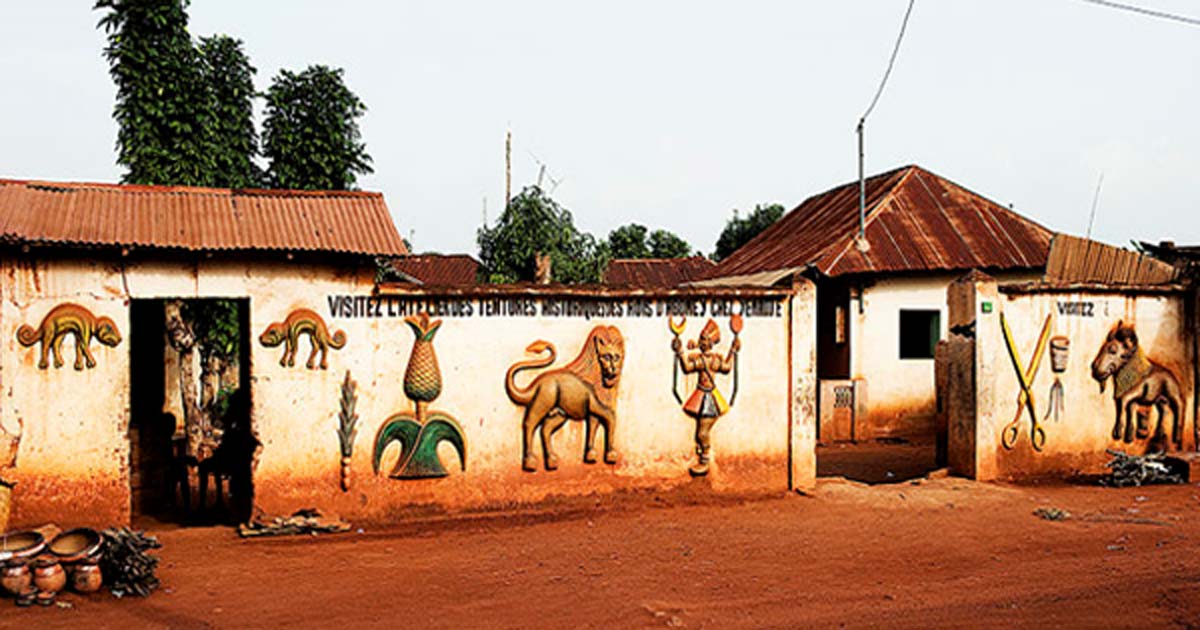Royal Palaces of Abomey, Benin: The Cultural Epicenter of One of Africa’s Greatest Empires Was Stained with Blood
Africa has many outstanding historic sites and one of the most remarkable of all is that of the Royal Palaces of Abomey in Benin, West Africa. This site is an amazing complex of palaces which has outstanding architecture and artistic works. For a period it was the epicenter of one of Africa’s greatest empires. These royal palaces are registered on the UNESCO List of World Heritage Sites in Africa and are preserved by the efforts of the Benin government and the international community.
The History of Dahomey Empire
The royal palaces were built by successive kings of the Dahomey Empire, which arose in the late 17th century in the Abomey Plateau. By conquering neighboring states, the empire became the master of much of modern Benin. This realm was renowned for its military prowess and especially for its female warriors, who formed the elite of the Dahomey army.

The Amazon warriors of the Dahomey. (Public Domain)
The Dahomey monarchy was heavily involved in the slave trade and often worked with European and Brazilian slavers. As a result, the empire became rich and powerful. However, after the suppression of the slave trade in 1853, Dahomey concentrated on the production of palm oil.
In two wars France conquered this kingdom and exiled the Dahomey monarch in 1900. Today the royal Dahomey family still have immense cultural and social prestige in Benin.
- The Benin Bronzes: A Tragic Story of Slavery and Imperialism Cast in Brass
- The Origins of Voodoo, the Misunderstood Religion
- From South to North, Africa is the Continent of Ancient Magic
Royal Palaces of Abomey, Built on Blood and Power
King Houegbadja is believed to have been the first to build royal compounds. The extant palaces were built by the 12 rulers of the kingdom within the cloistered precincts of Abomey, between the late 17th century and 19th century. For over two hundred years it was the seat of royal power.
The Dahomey kings, who were believed to be descended from panthers, were not just absolute monarchs, but also figures of great religious significance. Abomey and its palaces were the cultural heart of the empire. Many ceremonies were performed in the buildings that stressed the sacred nature of the monarch and were used to legitimize his power; human sacrifices were even performed. European visitors to Abomey also reported that the heads of slain enemy warriors were displayed within the complex.
The royal center was badly damaged during the second French-Dahomey war when the Europeans stormed the complex, but it was later repaired. In 1985 the site was once again almost destroyed by a tornado, and in 2009 a bushfire burned the palace complex and wrecked many royal tombs. UNESCO placed the palace complex on the List of World Heritage in Danger. It has since been restored and is no longer at risk. While the royal family of Dahomey still perform rites and rituals in the palaces, they no longer live there.
The Plan of the Palaces of Abomey
The palaces are located in a walled town that was encircled by a ditch filled with prickly shrubs and built from wood and straw using traditional building techniques. The site of the Royal Palaces of Abomey covers an area of almost 47 hectares and has ten palaces adjacent to one other, some of which were extended as each of the Dahomey kings built a palace or extended one.

Within the Royal Palaces of Abomey. (UNESCO/CC BY SA 3.0)
The complex of palaces is now divided in two as a road runs through the former royal precincts. Each of the former royal residences are walled and built around three courtyards. The inner courtyard was where the king held court. The basic principle of the palaces was that they were organized around the courtyards of increasing importance.
There are also many places of religious significance in the area. These include the Djexo hut where the spirit of past monarchs are believed to reside. All of the Dahomey kings were buried adjacent to the palaces.
- Oshun, African Goddess of Love and Sweet Waters
- Why Did Parents in the Chinookan tribe Perform Cranial Deformation on their Babies?
- Analyzing Mummy Genes: Were Ancient Egyptians closely Related to Middle Easterners?
The Bas-Reliefs of the Royal Palaces of Abomey
Many sculpted bas-reliefs that were placed in the alcoves of the walls and pillars of the palaces are to be found in the compounds. Local craftsmen made these polychrome reliefs from clay which was mixed with palm oil and painted with a dye. The bas-reliefs were used to record the history and religious rites of the kingdom, as the Dahomey culture was an oral one and there were no written records.

Bas relief sculpture. (NLPhotos / Adobe Stock)
Getting to the Royal Palaces of Abomey
The Royal Palaces are in the town of Abomey in the south of Benin. It is quite easy to reach the complex and accommodation near the Royal Palaces of Abomey is plentiful. An entrance fee is required to enter the buildings and visitors must be accompanied by a guide. There are many Dahomey artifacts to be seen in the compounds including traditional crafts, but photography is not permitted in the site.
Top image: Royal Palaces of Abomey. Source: Heerbaart, W/ CC BY 2.0
By Ed Whelan
References
Monroe, J. C. (2007). Continuity, revolution or evolution on the slave coast of West Africa? Royal architecture and political order in precolonial Dahomey. The Journal of African History, 48(3), 349-373. Available at: https://www.cambridge.org/core/journals/journal-of-african-history/article/continuity-revolution-or-evolution-on-the-slave-coast-of-west-africa-royal-architecture-and-political-order-in-precolonial-dahomey/9161CAD3798C67BD6D61BB0AEBB3CB44
Norman, N. L., & Kelly, K. G. (2004). Landscape politics: The serpent ditch and the rainbow in West Africa. American Anthropologist, 106(1), 98-110. Available at: https://anthrosource.onlinelibrary.wiley.com/doi/abs/10.1525/aa.2004.106.1.98
Piquщ, F., & Rainer, L. H. (2000). Palace sculptures of Abomey: history told on walls (Vol. 3). Getty Publications. Available at: https://books.google.ie/books?hl=en&lr=&id=s55QAgAAQBAJ&oi=fnd&pg=PP1&dq=royal+palaces+of+abomey&ots=SwTj8mpW-F&sig=CWMqMLKKwoX9bBemgvEVxQRspZw&redir_esc=y#v=onepage&q=royal%20palaces%20of%20abomey&f=false

















